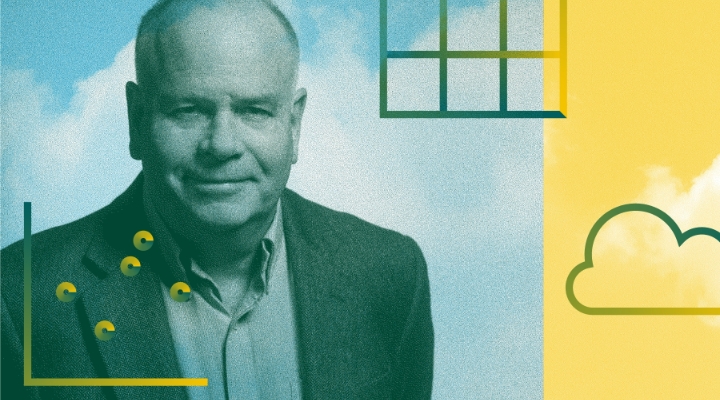
This column, it should be acknowledged, is built on sand. Nobody really knows how the savings and investment habits of today's young adults will differ from those of their parents. As millennials have just begun the process of saving for retirement, the evidence of their behaviour, such as it is, consists of anecdotes and impressions.
That said, the early signs are encouraging. Consider, for example, the FIRE movement: Financial Independence, Retire Early. My professional colleagues doubt this financial strategy, which seeks rapid wealth accumulation through extreme thrift. The Wall Street Journal’s Jason Zweig tweeted "Honk if you think this will actually work." More caustically yet, Morningstar's Karen Wallace responded, "I can't even imagine what would happen if I tried to feed my children brown bananas. I would need a bodyguard."
My view is more positive. While acknowledging Karen's counter that "none of these 40-year-old millionaires have kids," and Jason's disbelief that FIRE's advocates will stick with their financial diet, I salute the creed's direction. Baby boomers were raised to spend first, save later. That approach works well for those with high, growing incomes. For most Americans, though, incurring early debt means repaying loans when they should be saving for retirement.
Necessity versus Choice
The switch in viewpoint is also useful. As with governments, people generally regard their costs as fixed and their income as variable. They think they can control the latter by working harder but that they cannot much adjust the former, as they are locked into their obligations. That is wrong. Even for families with children, one person's necessity is another person's choice. FIRE highlights the overlooked side of the financial ledger.
I won't overstate matters. As journalists sometimes say: one observation is a dot, two forms a line, and three is a trend. Coverage of FIRE doesn't mean that there's truly something to the movement. Also, millennials have been known to change their minds. This is merely one step in a helpful direction. But the direction is right.
Digital Advice a Force for Good
More certain is the benefit from digital advice. To date, robo-advisers are tiny. Indeed, there is some debate as to whether the independent providers, such as Betterment and Wealthfront, will survive over the long term. However, there's no question that digital advice has taken hold at the major brokerage firms. Vanguard, for example, now runs more than $100 billion through its digital-advice platform.
And that's a good thing. Traditional financial-services firms claim otherwise, maintaining that generic computer programs can’t match the personal touch. However, I don't know any disinterested parties who believe that argument for newer investors. The $2,000 commission generated by selling a load mutual fund to a $50,000 client doesn't pay for extended conversations, nor for special expertise. Nor do many such buyers require customisation. They are well served by the low-cost portfolios created by digital providers.
Digital advice is the latest step in small-investor diversification. First came the single stock. It was followed by the single, actively managed mutual fund, which eliminated the possibility that the security would go to zero. Then came the index fund, which removed manager risk. Now there are digital-advice portfolios, which combine multiple index funds. Not all steps were equally important - the shift from stock to fund being the largest of the jumps - but all were improvements.
Back to Fundamentals
Also encouraging has been the demise of market prognosticators. Admittedly, that puts the matter too strongly: there remain those who prophesy the stock market's future. But they are far less visible than in the past. Back in the day, moderators customarily asked investment "experts" where the Dow Jones Industrial Average would be 12 months later. The question was routine. Today, it is not. Millennials don't believe the answers.
Among my salient 1990s' memories is blithely answering "7,200" to the query while participating on a panel at an investment conference, then watching in horror as several dozen pens scribbled down the response. That was the first and last time that I failed to dodge the question. Although ironically, by sheer dumb accident, the prediction hit very close to the mark.
If there are to be forecasters, better that they attempt the feat for individual stocks, as company prospects can be discussed more intelligently than can the direction of the stock market. One of the places this occurs is at the "transparent investing platform" Netvest, which permits members to share their stock selections. One particularly successful subscriber, the company's publicist informed Morningstar, is Mona Carmody, "the Michigan personal investor consistently beating Wall Street."
Once again, my coworkers were sceptical - an emotion that I somewhat shared when I compared Carmody's 81 per cent gain for the five-year period from 2013 to 2017 to the S&P 500’s return.
You guessed it, the index was higher, at just under 99%. But then I stepped back. The process is fully transparent; the investments are for the long term; and the analysis is based on business fundamentals. That certainly beats day trading, which online investment firms were hawking 20 years ago.
None of this is to suggest that millennials will achieve financial success. They may even fare worse than my baby boomer generation, when all is said and done. But the early indications are positive. In becoming warier about spending, or at least, discussing the issue, adopting digital advice, and moving from stock market forecasts to more-meaningful investment discussions, younger investors seem to have learned from their elders' mistakes.
John Rekenthaler has been researching the fund industry since 1988. He is now a columnist for Morningstar.com and a member of Morningstar's investment research department. John is quick to point out that while Morningstar typically agrees with the views of the Rekenthaler Report, his views are his own.




























